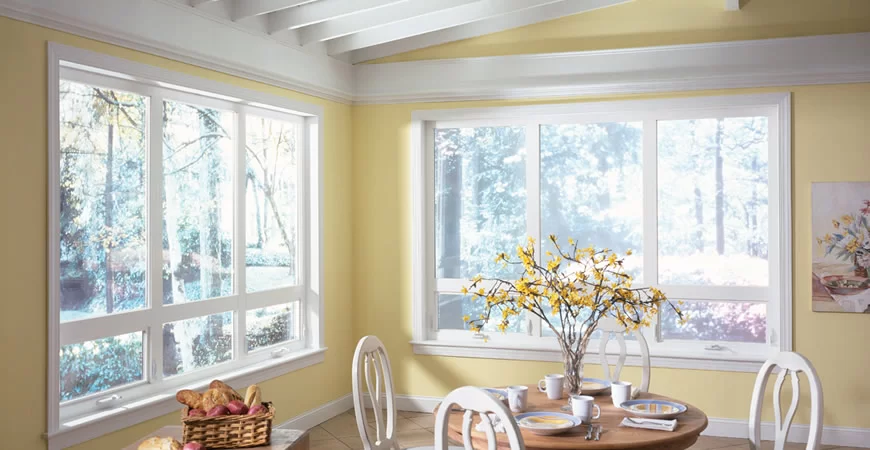BAL 40 Windows & Doors
- Home
- BAL 40 Windows & Doors
There are six levels of BAL recognized by the Australian Rural Fire Service. In ascending order, in terms of seriousness, they are:
BAL – LOW – Lowest risk from a potential fire.
BAL – 12.5 – Risk is primarily from potential embers during a fire.
BAL – 19 – Moderate risk, particularly from embers and burning debris.
BAL – 29 – High risk, particularly from embers, debris, and heat.
BAL40 – Very high risk. Likely to be impacted by embers, debris, heat, and potentially flames.
BAL – FZ – Extreme risk. Directly exposed to the flames of a potential firefront

BAL40 - Bush Fire Rated Windows & Doors Supplier
A home can have different BAL levels attributed to its various elements. For example, bush-facing structural components tend to have a higher BAL rating than areas of the house facing the road.
Because they are closer to fire-prone areas, bush-facing housing materials are at greater risk of combusting and must be built using compliant materials to reduce the level of risk present during a fire.
Building to the correct BAL rating provides better protection for your family and helps retain the structural integrity of your home during a bushfire. Most houses in bushfire-prone areas must meet BAL40 or BAL-FZ requirements.
There are only a few differences between the two. BAL-FZ products are generally made from steel, whereas BAL40 or lower are aluminium.
At Energy Saving Windows and Doors, our double glazed glass panels use a minimum of 5mm toughened glass for superior safety.
They are much harder to break through as one pane acts against the other with an air cushion in between. All our windows and doors are BAL40 rated and are suitable for bushfire-prone zones.
Benefits of double-glazed glass in bushfire protection
Double-glazed glass is a type of glass that has been impregnated with a polymeric material that provides improved fire protection. This type of glass has a higher melting point than regular glass and can withstand higher temperatures, which makes it more effective at stopping the spread of fire.
In addition, it is shatterproof and can resist damage from high-speed impacts. These features make double-glazed glass an excellent choice for building insulation and in fire protection systems.
One important benefit of using double-glazed glass in building insulation and in fire protection systems is the fact that it reduces the energy costs associated with heating and cooling buildings.
This is because it helps reduce the amount of heat lost through windows, walls, and ceilings. In addition, it helps to keep indoor air cool and comfortable, which helps to reduce the strain on air conditioning units.
In summary, double-glazed glass is an effective way to protect buildings from the effects of bushfires by reducing energy loss and helping to maintain comfortable indoor temperatures.
Features of double-glazed glass for BAL40 rating
Double-glazed glass is a type of glass that has two layers of glass separated by a layer of insulation. The layers are typically composed of different types of glass and have different properties. This creates a barrier that prevents heat from escaping or entering the building.
It is typically used in windows, doors, and walls to improve insulation and energy efficiency. Features of double-glazed glass for BAL40 rating include:
High thermal resistance:
Double-glazed glass has high thermal resistance, which means it can withstand high temperatures without melting or breaking. This makes it effective at preventing heat transfer between indoor and outdoor environments.
Low U-factor:
The U-factor (a measure of the rate at which heat enters a building) of double-glazed glass is low, which helps to reduce the indoor air temperature.
High insulating value:
The insulating value (a measure of how well a material insulates) of double-glazed glass is high, making it an effective tool for insulating buildings.
How to select double-glazed glass for BAL40 rating
Choosing a double-glazed window for your home is a task that requires careful consideration, as different types of glass can have different performance characteristics. One important aspect to consider is the sun protection rating (SPF) of the glass.
This refers to how effectively it blocks out UV radiation. Higher SPF values indicate greater protection against the sun’s harmful rays.
Another important factor to consider is the heat retention capability of the glass. High-heat retention glass allows heat from indoor sources to escape more readily, resulting in cooler indoor temperatures and lower energy consumption.
In addition, high-performance glass can also be used for privacy purposes, as it offers good visibility without sacrificing the need for sunlight or heat transfer.
It is also important to consider factors such as cost and aesthetics when choosing a window for your home.
However, one thing to keep in mind is that every type of double-glazed window has its strengths and weaknesses, so it is important to research each option carefully before making a final selection.

